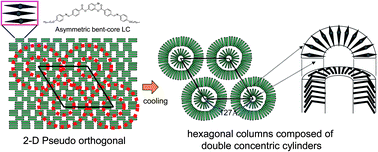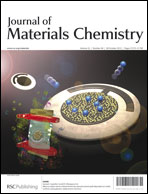Banana-shaped molecular architecture: Formation of large columns composed of two concentrically enclosed layers†
Abstract
The room-temperature solid phase (X3) of banana-shaped molecules that forms on cooling from the B6 phase is characterized as having an extremely large hexagonal lattice. In this study, we acquired a detailed structure of the X3 phase from synchrotron radiation (SR) micro-beam X-ray and


 Please wait while we load your content...
Please wait while we load your content...